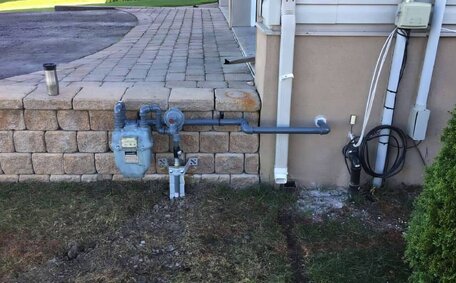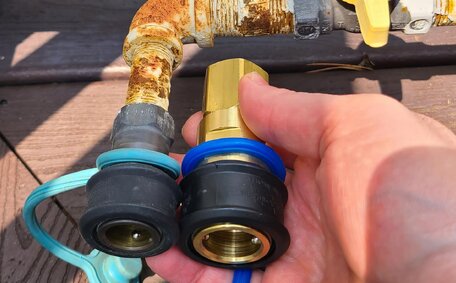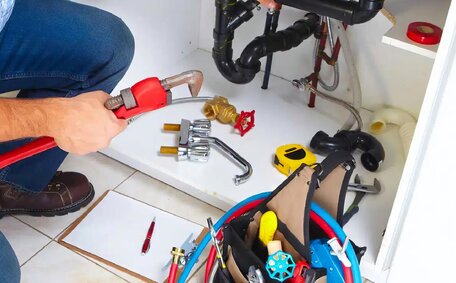Introduction to the water leakage problem
Water leaks, if unnoticed, can cause considerable damage and are a significant financial drain. In the United States, it’s estimated that water leaks lead to an annual loss of around AUD 37 billion in treated water. This situation not only increases utility bills but also prompts the question of exactly how many litres of water, a precious resource, are wasted.
Without regular monitoring, even a small crack in Marsfield, Sydney’s water systems can lead to the loss of thousands of litres of water each day.
That’s why early leak detection and repair are critical to protect both households and utilities. Smart technologies offer efficient solutions for the swift and precise detection of water leaks, reducing reliance on manual checks.
This article delves into the smart leak detection technology, from sophisticated sensors and machine learning algorithms to automated shutoff valves. Additionally, we’ll showcase practical cases of cities and homeowners utilising these devices for water conservation, cost savings, and prevention of damage caused by leaks.
Types of smart leak detection technologies
There are several types of smart technologies available for detecting water leaks:
Sensors
Water sensors monitor variables such as pressure flow, rate changes, and humidity, among others, to pinpoint leaks with high accuracy. Utilising cutting-edge sensing technology, these sensors relay real-time data for detailed analysis and precise leak identification.
Machine learning algorithms
Machine learning algorithms enable smart water systems to recognize irregular consumption patterns and leaks by analysing extensive sensor data throughout the water network.
Shutoff valves
Automated shutoff valves connected to WiFi water sensors can immediately halt the water supply upon detecting a leak, preventing waste and damage.
Metering devices
Smart flow meters provide more precise monitoring of water consumption, quickly detecting leaks by assessing consumption against historical data and expected levels.
Collectively, these smart water technologies are pivotal in advancing sustainable water management practices.
Leak detection sensors
Leak sensors are devices that monitor water flow and identify potential leaks, yielding critical data for effective water management. They employ various instruments, including noise loggers and tools like listening sticks, alongside flow and pressure detectors, to spot abnormalities that may indicate leaks.
Leak sensors are vital for both residential and commercial settings, aiding in the upkeep of plumbing systems by monitoring water flow in pipes and appliances. A more sophisticated leak detection system with multiple sensors can map out an entire water infrastructure to pinpoint leak locations.
The sensors transmit real-time data through wireless connectivity to monitoring platforms. Algorithms, empowered by the internet of things, efficiently process the incoming data without time delay to differentiate between usual water usage and abnormal flows that may require urgent repairs. In case of a suspected leak, an emergency shutoff valve can be activated, sending an alert and cutting off the water supply to prevent unnecessary waste and potential damage.
Quick identification of leaks by these sensors ensures timely repairs, preventing substantial losses from our water systems. Their sensitivity also means that leaks that might otherwise go undetected are caught early, avoiding extensive damage over time.
Moisture sensors
Moisture sensors meticulously play a key role in identifying all water-based leaks; they detect excess moisture and send alerts when areas might signal water damage. They can be installed beneath sinks, near hot water heaters, under appliances, and along pipes.
Upon detecting abnormal humidity levels, these sensors send alerts to homeowners and facility managers to inspect for leaks. This allows rapid response to minimise water wastage and prevent flooding.
Flood sensor systems designed specifically for leak detection commonly integrate with smart home platforms, offering residents peace of mind through advanced sensor technology. This feature allows for instant notifications to homeowners regarding any leaks, even while they’re away. It also allows for the remote activation of water shutoff valves to stem the flow.
Immediate alerts from these sensors about moisture buildup and potential leaks help to avert costly water damage and long-term structural problems. These devices instill a sense of peace of mind that is invaluable to homeowners.
Pipe inspection cameras
Pipe inspection cameras, also known as pipe crawlers or plumbing cameras, are an important technology for proactively detecting leaks in water systems. Waterproof pipe cameras are essential in detecting leaks, capable of being inserted into pipes to relay live video or recorded footage for later analysis.
Key benefits of using smart pipe inspection cameras for water managers include:
- Identifying leaks, blockages, cracks, and other issues without needing to interrupt the water system
- Pinpointing the exact locations of problems for targeted repairs
- Conducting proactive inspections to discover issues before major leaks or bursts occur
Footage from plumbing cameras, sometimes enhanced with printed sensors, can detect leaks through visual cues like water drops or cracks, while subtler signs like mineral deposits, mould, and pipe corrosion offer managers can deliver valuable insights to their customers. Specialised software can automatically review video recordings to pinpoint potential issues, offering valuable insights to managers and clients.
When it comes to pipe upkeep, regular inspections using these specialised cameras help prevent leaks and water loss, allowing water utilities and building owners to actively monitor conditions. Through accurate condition assessment, we are better equipped to locate leaks, maximise system lifespan, reduce water wastage, and avoid serious floods or property damage.
Benefits of smart leak detection systems
Preventing Water Damage and Losses
Smart water leak detectors provide crucial preemptive alerts to prevent severe water damage and support water conservation efforts. Water leak detectors, which include sensors and metres, detect anomalies, allowing rapid response before leaks worsen or pipes burst. This avoids extensive repairs and losses reaching thousands of litres that are often associated with burst pipes.
Lost drinking water from leaks, which can run to gallons each day our utilities process, counts as non-revenue water, accruing significant costs to ratepayers. Research indicates that smart leak detection technologies can decrease non-revenue water by 15-20% daily. Fewer losses mean lower operating costs, and utilities can pass on savings through reduced fees.
Enabling Proactive Maintenance
Water companies are now using smart systems to move from reactive to proactive maintenance, conducting inspections and repairs before failures occur. Analytics identify high-risk areas, and sensors detect micro-leaks before visible failures. This predictive approach, when it comes to infrastructure lifespan, avoids emergency situations and proactively manages resources.
Case studies of smart leak detection systems
City-Wide Leak Detection and Repairs
In an initiative by Cairns, a forward-thinking Australian city, a partnership with Utilis utilised satellite technology to map the whole water network. Over 17,000 leaks were detected, allowing targeted repairs that reduced the city’s non-revenue water loss from 25% to 9% - saving billion gallons each year.
Automated Leak Shutdowns in Commercial Buildings
KCI Technologies installed sensors and automated valves designed to detect gallons each day our commercial buildings in Maryland, USA leak when the set threshold is surpassed. Leaks that exceed 25 gallons each day are now swiftly detected and systems automatically shut down to prevent escape water and sidestep extensive losses. This has reduced insurance claims and maintenance costs for owners.
Smart Metres Identifying Underground Leaks
Thames Water is in the process of rolling out over 2 million smart water metres across homes in the UK by 2030. Along with more accurate billing, these systems use data analytics to rapidly detect underground leaks. This will reduce Thames Water’s leakage rate by over 50% long-term.
Integration with smart home devices
Leak detection and moisture sensors seamlessly integrate with a variety of smart home systems. API protocol connectivity enables the exchange of information between leak detection devices and home control centers, offering a complete overview of household systems.
Homeowners can monitor leak and moisture sensor data alongside other smart devices, such as thermostats and security systems, through seamless integration. Phones receive leak alert notifications through smart home apps to prompt an immediate response when issues arise. Some integration examples include:
- Connectivity for the Flo by Moen sensors to Amazon Alexa and Google Assistant home hubs
- Philips Hue flood sensors triggering Lifx smart bulb colour changes and water valve closure
The interoperability between sensors and smart hubs within a unified smart home system provides homeowners with reassurance. Whether at home or away, leak and moisture data generates automated alerts and responses, like water supply shutdowns. Integrated devices also alert homeowners if problems are detected, allowing timely repairs to avoid extensive damage.
Choosing the right solution for your needs
Choosing the ideal leak detection solution requires evaluating the type of building, the specifics of the water infrastructure, and your main priorities. Key aspects to consider include:
Building Type
Leak detection solutions appropriate for single-family homes are distinct from those required in larger commercial premises with intricate water main systems. Simple sensors monitoring appliances may suffice in homes, while large facilities require extensive sensor networks and analytic metres.
Water Infrastructure
Consider pipe types and locations, stored water tanks, irrigation systems, and other variables. What parts are most vulnerable or costly if leaks occur? Prioritise monitoring there.
Priorities and Budget
Prevention of catastrophic leaks may be the priority for basements or equipment rooms. Reducing water bills may be the focus in homes. Establish needs, then select technology capabilities accordingly, also keeping budget constraints in mind.
Experienced plumbers specializing in municipal water systems can offer site assessments and tailored solutions that match your building’s needs, infrastructure, and key priorities. This ensures optimal ROI on leak protection for residential, commercial, and municipal settings.
Conclusion
As we’ve explored more about smart technologies, we realise they provide invaluable capabilities for detecting and preventing costly water leaks. Sensor systems that monitor moisture, flow rate, pipe pressure, and acoustics can rapidly identify anomalies indicating leaks - triggering alerts and automated shutoffs by integrated smart home platforms.
From leaky pipes with minor drips to major pipe bursts that can lead to flooding, leaks cause extensive damage to properties. Smart detection allows much more timely intervention before catastrophic failures such as breaks each year occur. Benefits like leak prevention, water conservation, reduced bills, and proactive maintenance make solutions a prudent investment for Marsfield homes and businesses.
To determine the right leak detection options for your specific needs - To ensure your plumbing infrastructure remains intact and leak-free - consult our expert team at Marsfield Plumbing. With customised solutions spanning sensors, analytic metres and more, we can help implement savings and insurance against water losses and the disruptive impact of leaks.
Don’t tolerate the continual waste and risk of unseen water leakage. Our smart technologies identify issues early, allowing rapid response. To explore your system’s leak detection capabilities, call us at 1300 349 338 or email jobs@marsfieldplumbingservices.com.au. Our team looks forward to helping curb your water losses.






